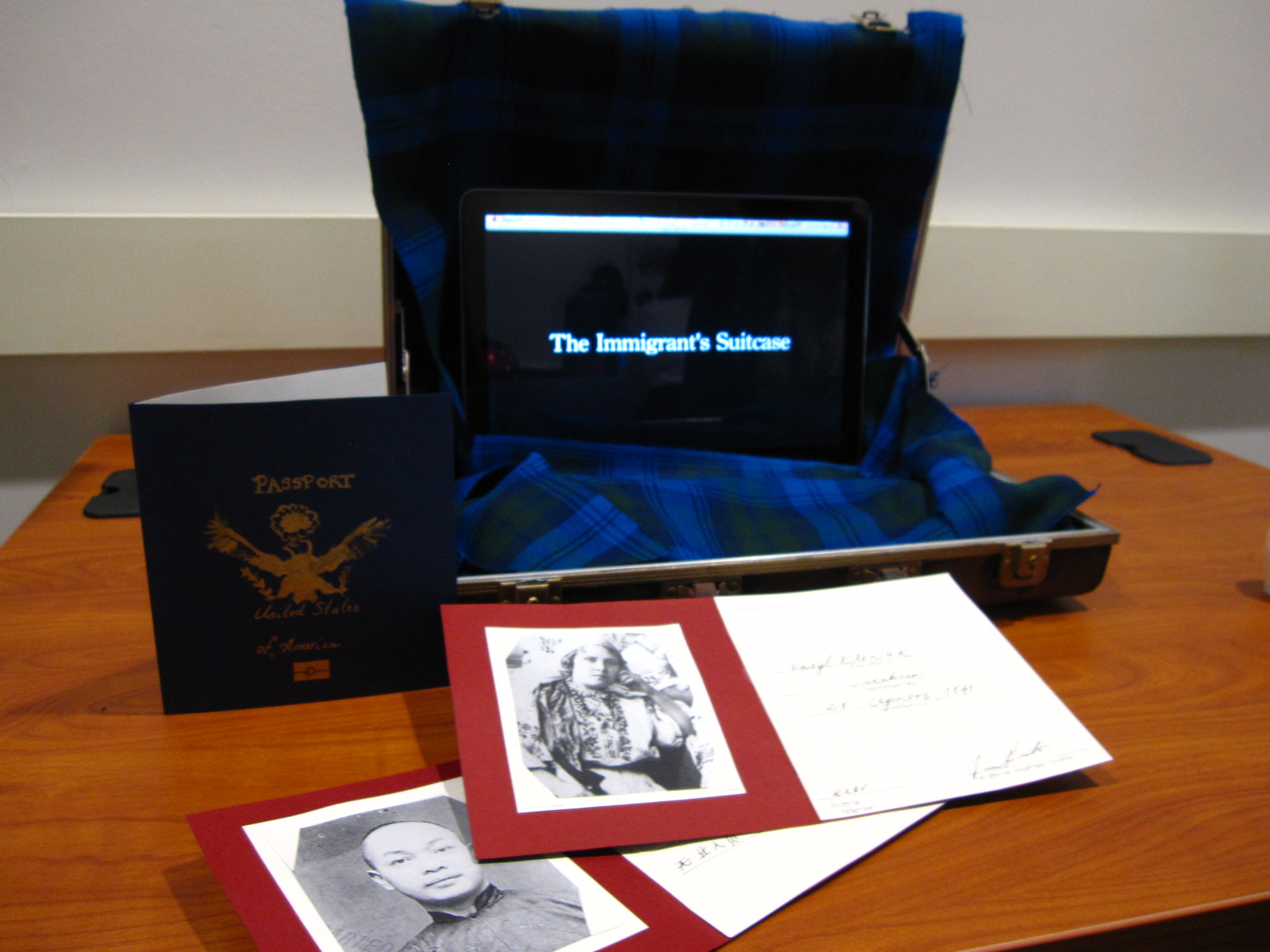How Phidgets Make Museums More Interesting
Interactive installations for public venues with Phidgets
by Kat

Student projects
Phidgets are a widely used tool for museums and interactive art installations. William J Turkel teaches interactive exhibit design at Western University, which offers a graduate program in Public History. His Interactive Exhibit Design class has students that are pursuing careers in museums, archives, historical sites, and national parks (anywhere history is communicated to, and understood by, the public) create a series of hands-on projects that encourage learning by interaction. Turkel explains that "by learning the basics of interaction design and physical computing, students learn to express their own historical interpretations in a wide range of media: exhibits, environments and installations; toys and games; wearables; and playful, interactive gizmos of all sorts."
He uses Phidgets and Max 6, which allows "students with no programming experience–no technical background, really–to prototype creative and intricate projects very quickly." For him and his students the solidity and reliability of Phidgets are key. "They tend to just work, which isn t something that can be said for many of the alternatives," says Turkel. "There are also a wide range of sensors and interface kits to fit just about any project…"
Paulina Johnson, a Cree woman, sewed an accelerometer into a yoke, an item of clothing worn during Pow-wow dances. Her project allows museum patrons to learn how to Pow-wow dance.
Adriana and Lindsay used an RFID reader from Phidgets to build an immigrant s suitcase. When you swipe an RFID-tagged passport over the lower half of the suitcase, a screen embedded in the top half shows a video about that person.
Stacey Devlin made a map sailing robo-ship (link removed) using stepper motors, a Phidget Stepper controller and magnets to guide a small paper ship on a course that 16th-century Portuguese merchants might have taken.
Karly s Andy Warhol exhibit uses four Campbell s soup cans with RFID tags on the bottom of each, and a Phidgets RFID reader hidden in the base. As the user rearranges the stack of cans, he or she learns new things about Warhol s life and art.
Interactive museum exhibits
All these student projects are in the prototype stages. In real musuem design, exhibits have to be simple, reliable and transparent. Not only do exhibits have to be easy to understand, but they have to stand up to being used thousands of times a day, by people who won t necessarily be gentle. "Students usually underestimate how robust something has to be before it can be installed in a public setting where it is going to get a lot of use," explains Turkel. Although many of the student projects involve tape, cardboard, and solderless breadboards, Turkel claims that "Phidgets are typically one of the few pieces of a proof-of-concept exhibit idea that isn t going to need a lot of further bulletproofing."
Leo Knapp uses Phidgets in interactive museum exhibits for the Oakland Museum of California. He uses exhibits to "communicate with people in the most efficient and creative way" and he uses Phidgets (with Max 6) for these exhibits to control motors, sense people's proximity, control video, sync sound and more.
He's worked on projects such as Polar Projections, which has guests stand around a hub of cameras that take multiple pictures and then stitches them together. He also designed "Be A VJ", which allows visitors to mix live and prerecorded audio and video to create a layered audio-visual experience. His exhibits emphasize human interaction, which seems to be the way many museums are going.
And it doesn't stop there, exhibit designers around the world use Phidgets to richen the experiences for museum guests. Designers at Moey Inc used Phidgets in the Formula Morph exhibit at the Museum of Mathematics (MoMath) in New York City, which illuminates mathematical patterns and structures that are all around. Visitors turn colourful dials to manipulate the formulas and see how that morphs the shape.
These exhibits grab the attention of visitors and enrich experiences by inviting the public to explore and question, not to just digest written information and look at encased artifacts. Ideally, says Turkel, "the nature of the interaction follows from the materials being exhibited in a natural or clever way", which makes Phidgets a great candidate for interactive endeavours like the examples above. Of course, more than just Phidgets are required to make a stunning exhibit; creativity is the magic weapon.
